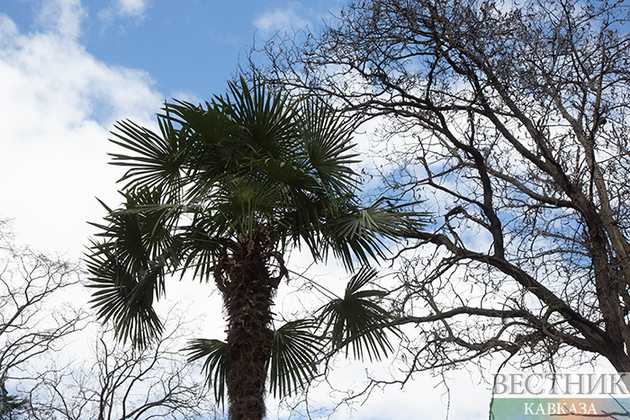Referred to as the 'cradle of civilisation', the region continues to offer researchers clues about the lives of ancient peoples. It is well established that the western conception of modern civilisation started with the people who lived in the Near East and Egypt around 6,000 years ago. Middle East Eye writes that these civilisations gave the world its earliest forms of writing, agricultural techniques, first codes of laws and religious ideas that continue to influence people today.
A testament to the far-reaching impact of the early peoples of the Middle East is the tourist industries that have developed around the ruins they left behind and the fact most of the world's elite universities have departments dedicated to the study of Ancient Egypt and other civilisations, such as the Babylonians, Assyrians, Hebrews and Persians. Despite hundreds of years of study, however, archaeologists continue to make new findings, with 2022 being a particularly busy year for fans of the ancient history of the Middle East.
1. Sarcophagi and statues found at Saqqara in Egypt
In May 2022, researchers found a trove of artefacts at the Saqqara necropolis close to the Egyptian capital of Cairo. The huge archaeological haul included 250 sarcophagi containing mummies and around 150 statues and statuettes of Ancient Egyptian gods, including Isis and Nephthys, dated to around 500 BCE. Just two months earlier, in March, researchers had unearthed tombs at the same site, which dated as far back as 2,700 BCE during the Old Kingdom period. Saqqara served as a burial site for successive Egyptian dynasties based in their capital of Memphis, which is also located in what is now the Greater Cairo area. The location is home to some of ancient Egypt's oldest pyramids, including the 4,700-year-old Pyramid of Djoser.
Over the millennia, Egypt has hosted many civilisations, including Greek, Roman, Arab and Ottoman, among others; all of which have left a mark on the country's culture and history. In April, researchers in northwestern Sinai province unearthed a temple built to honour the Greek god Zeus and the weather god Kasios at the Tell el-Farama archaeological site. Rumours that a temple dedicated to Zeus was located in the area had circulated throughout the 20th century, although no excavations had taken place until recently. In Greco-Roman times, the northwestern Sinai area was known as Pelusium, strategically located close to the mouth of the Nile river.
2. A once-drowned city rises again in Iraq
After spending over two decades at the bottom of Mosul reservoir along the Tigris river in Northern Iraq, a team of Kurdish and German archaeologists uncovered a 3,400-year-old Bronze Age city dated to the Mittani Empire period. The Mittanis controlled large parts of northern Mesopotamia and Syria between 1550–1350 BCE, after which the Middle Assyrian Empire began its domination of the region. Iraq is one of the countries worst hit by the effects of climate change and the drying up of the Tigris due to rising temperatures helped expose the remains of the city. Researchers say the site, which was announced in May 2022, contained an expansive city with a palace and many large buildings, and have suggested that it could have been the lost ancient city of "Zakhiku". The walls of the complex were in good condition even though they were made of dried mud bricks and were underwater for more than 40 years.
3. Jordan uncovers 9,000-year-old stone carvings
A discovery by French and Jordanian researchers in the southeastern Jordanian desert predates the start of civilisation. The site features rudimentary stone pillar carvings believed to have had a spiritual meaning, as well as stone traps used to capture animals. Archaeologists involved in the find say that the site could be one of the earliest extant human constructions. Animal bones and pottery have also been discovered nearby and it is believed the pillars and the carvings indicate their use for sacrificial ceremonies.
4. A 4,000-year-old board game in Oman
In January 2022, a team of Omani and Polish researchers uncovered artefacts close to the village of Ayn Bani Saidah, in an area that has previously been proven to have been home to Bronze and Iron Age human settlements. Most notable among the findings was a board that has marked fields and cup holes, which was likely used to play games. University of Warsaw's Professor Piotr Bielinski said that, along with other findings in the area, the artefact proved the site was "an important place in prehistory, and perhaps also in the history of all of Oman". Similarities to finds in Mesopotamia suggest there was interaction between the residents of Bronze Age Oman and people living in what is now Iraq.
5. A Roman cemetery in Gaza
Construction workers in the northern Gaza Strip were digging up foundations for a housing project when they unearthed something that seemed very old and important. They immediately called archaeologists, who confirmed they had found a 2,000-year-old, 50-square-metre Roman cemetery containing at least 20 ornately decorated graves. Because of the shape and decorations found on the graves, they most probably belonged to members of the Roman elite. The ruins and artefacts date back to the first century when the area was part of the Roman province of Judea. Palestinian officials in Gaza called it the most important local discovery of the decade and evidence of the area's rich history. Situated along the Mediterranean coast, north of Sinai and at the foot of the Levant, Gaza has long been prized for its strategic location. For thousands of years it has been ruled by Egyptians, Israelites, Romans, Greeks, Arabs, Turks and Europeans, among others.






